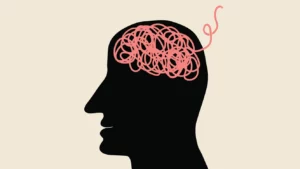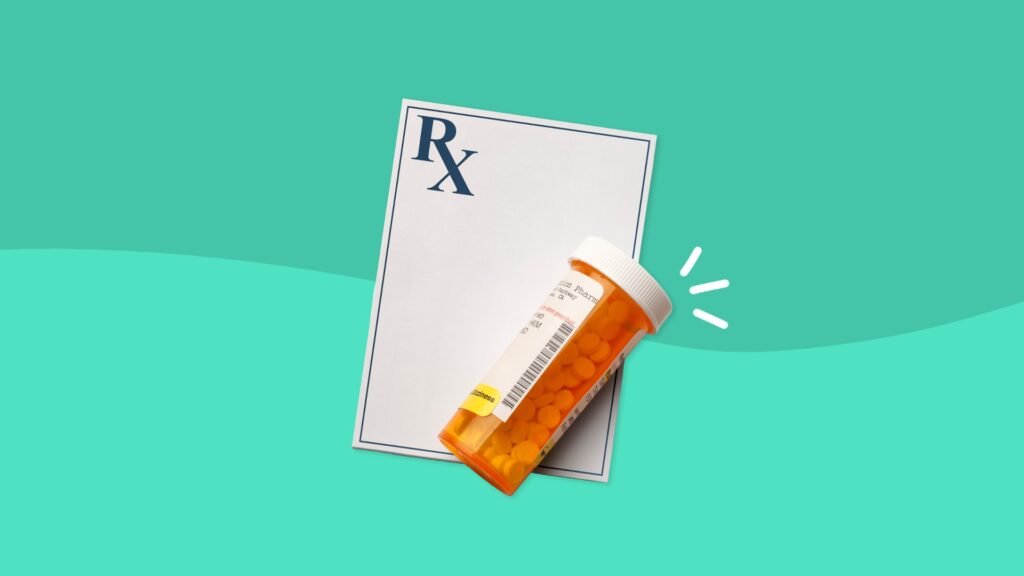Attention Deficit Hyperactivity Disorder, or ADHD, is a condition that can cause problems with focus, hyperactivity, and impulsiveness. There are many different treatments for ADHD, including medications like propranolol. Propranolol is a beta-blocker medication that has been shown to be effective in treating ADHD symptoms. In this blog post, we will discuss the benefits of propranolol for ADHD, as well as the side effects and dosage information.
Contents
- 1 What Is ADHD?
- 2 What Does the Research Say About Propranolol for ADHD?
- 3 How Does Propranolol For ADHD Work?
- 4 What Is The Dosage Information?
- 5 Is Propranolol Effective For ADHD?
- 6 What Are The Benefits Of Propranolol ADHD?
- 7 What Are The Side Effects?
- 8 Are There Any Alternatives To Treat ADHD?
- 9 Conclusion
What Is ADHD?
 ADHD is a mental disorder that is characterized by problems with focus, hyperactivity, and impulsiveness. According to the Diagnostic and Statistical Manual of Mental Disorders (DSM-5), ADHD can cause significant impairment in daily functioning and can be diagnosed in children as young as six years old.
ADHD is a mental disorder that is characterized by problems with focus, hyperactivity, and impulsiveness. According to the Diagnostic and Statistical Manual of Mental Disorders (DSM-5), ADHD can cause significant impairment in daily functioning and can be diagnosed in children as young as six years old.
There are three types of ADHD: predominantly inattentive type, predominantly hyperactive-impulsive type, and combined type. People with the inattentive type may have trouble paying attention, be easily distracted, or daydream a lot. Those with the hyperactive-impulsive type may be constantly moving, have difficulty sitting still, or talk excessively. People with the combined type have symptoms of both the inattentive and hyperactive-impulsive types.
ADHD is one of the most common mental disorders in children and adolescents, and it can continue into adulthood. Therefore if you are an adult with ADHD, you are not alone.
What Does the Research Say About Propranolol for ADHD?
There is some research that suggests that propranolol may be effective in treating symptoms of ADHD. A small study from 1984 found that propranolol improved symptoms of hyperactivity, impulsiveness, and distractibility in children with ADHD.
However, a more recent study from 2002 found that propranolol was no more effective than a placebo in treating symptoms of ADHD. In this study, children ages 6-16 were given either propranolol or a placebo for four weeks. The researchers found that there was no significant difference between the two groups in terms of improvements in ADHD symptoms.
So, overall, the research is mixed on whether or not propranolol is effective for treating ADHD. However, it’s important to keep in mind that both of these studies had small sample sizes, so more research is needed before any definitive conclusions can be drawn.
How Does Propranolol For ADHD Work?
 This medication works by affecting the sympathetic nervous system, which is responsible for the fight-or-flight response. In people with ADHD, this system is chronically overactive, causing symptoms like restlessness and impulsivity. Propranolol works by blocking the action of certain chemicals in the body that contribute to the overactivity of the sympathetic nervous system.
This medication works by affecting the sympathetic nervous system, which is responsible for the fight-or-flight response. In people with ADHD, this system is chronically overactive, causing symptoms like restlessness and impulsivity. Propranolol works by blocking the action of certain chemicals in the body that contribute to the overactivity of the sympathetic nervous system.
It is believed that the process of medication works for two primary reasons.
- First, it can help to reduce the overall level of activity in the brain.
- Second, it helps to improve blood flow to the frontal lobe of the brain, which is responsible for executive functioning skills like planning and organization.
So, the working of you can say that it firstly slows down the working of the brain and secondly, increase blood flow to the frontal lobe. This is how Propranolol works for ADHD!
What Is The Dosage Information?
When it comes to using propranolol for ADHD, the dosage information can vary depending on a few different factors. These are:
- Age of the person
- The severity of their symptoms
- Other medications they are taking can affect the proper dosage
That being said, it is generally recommended that children start with a lower dose of propranolol and increase it gradually as needed. The usual starting dose for children is 0.5 mg per kilogram of body weight per day. For adults, the starting dose is usually 10 mg per day.
If propranolol is being used to treat essential tremors, the recommended starting dose is 40 mg two or three times a day. If propranolol is being used to treat performance anxiety, the recommended starting dose is 10-30 mg before the event.
The right dosage of the medication will be different for each person. It is important to follow the instructions given by the doctor or pharmacist carefully. The doctor will likely start with a low dose and increase it gradually as needed.
Is Propranolol Effective For ADHD?
 Many people with attention deficit hyperactivity disorder (ADHD) have trouble focusing and controlling impulsive behavior. Medications like propranolol are believed to be effective in treating ADHD by targetting the sympathetic nervous system.
Many people with attention deficit hyperactivity disorder (ADHD) have trouble focusing and controlling impulsive behavior. Medications like propranolol are believed to be effective in treating ADHD by targetting the sympathetic nervous system.
Propranolol is a non-selective beta blocker that was first approved by the FDA in 1964 for the treatment of high blood pressure and angina pectoris. Today, it is also used to treat anxiety, tremors, migraine headaches, stage fright, and various other conditions.
While propranolol is not approved by the FDA for the treatment of ADHD, it is often prescribed off-label for this purpose. Several small studies have found that propranolol may be helpful in treating symptoms of ADHD, but more research is needed to confirm these findings.
So, if you and your doctor are considering propranolol for the treatment of ADHD, it is important to be aware of the potential risks and side effects associated with this medication.
What Are The Benefits Of Propranolol ADHD?
There are several potential benefits of propranolol for people with ADHD. Propranolol may help improve some of the symptoms associated with ADHD, including:
- Impulsivity
- Hyperactivity
- Distractibility
- Poor concentration
- Improve academic performance
Propranolol may also help to improve emotional symptoms associated with ADHD, such as:
- Anxiety
- Depression
- Mood swings
- Irritability
These benefits can be especially helpful in children and adolescents with ADHD. So do not just wait and see how your kid will develop, get them propranolol as soon as possible.
What Are The Side Effects?
The most common side effects of propranolol for people with ADHD include:
- Drowsiness
- Fatigue
- Headache
- Nausea
- Dizziness
- Constipation
Propranolol may also cause more serious side effects, including:
- Low blood sugar (hypoglycemia)
- Slow heart rate (bradycardia)
- Heart block
- Allergic reactions, including anaphylaxis
- Depression
- Problems with blood circulation in the hands and feet (peripheral vascular disease)
- Nightmares or vivid dreams
Rarely, propranolol can cause a condition called akathisia, which is characterized by restlessness and an inability to sit still. If you experience akathisia while taking propranolol, tell your doctor so they can adjust your dosage.
Overall, propranolol for ADHD is considered a safe and effective treatment option with relatively few side effects. However, as with any medication, there is always the potential for side effects. If you experience any serious or bothersome side effects while taking propranolol, be sure to talk to your doctor.
Are There Any Alternatives To Treat ADHD?
 Sometimes, propranolol for ADHD might not be the best option. If your child is struggling with ADHD, it’s important to consider all of the possible treatment options. Some alternatives to propranolol for ADHD include:
Sometimes, propranolol for ADHD might not be the best option. If your child is struggling with ADHD, it’s important to consider all of the possible treatment options. Some alternatives to propranolol for ADHD include:
- Stimulant medications: These are the most common type of medication used to treat ADHD. Stimulants increase levels of dopamine and norepinephrine in the brain, which can help improve focus and concentration.
- Non-stimulant medications: These medications work by affecting other chemicals in the brain, such as serotonin. They’re often used in children who can’t tolerate stimulants or have side effects from them.
- Behavioral therapy: This type of therapy can help your child learn new skills and strategies for dealing with ADHD symptoms.
- Parent training: This type of training can help you learn how to better support your child at home and at school.
If you’re not sure what’s best for your child, talk to your doctor. They can help you weigh the pros and cons of each treatment option. You should also ask about any potential side effects and how well each option has been studied in children.
Moreover, it is important to keep in mind that no single treatment is right for every child. What works well for one child might not work for another. It’s often a process of trial and error to find the best treatment approach.
Conclusion
In conclusion, propranolol ADHD is a potential treatment option for those with ADHD. It can offer some benefits, including improved focus and decreased hyperactivity. However, it also comes with a risk of side effects, such as low blood pressure and fatigue. Therefore, it is important to discuss propranolol with a doctor before starting any treatment.
With the help of a doctor, propranolol could be a safe and effective treatment option for those with ADHD. So do not hesitate to ask your doctor about it.
If you are struggling then please contact Therapy Mantra for help. The team of experts here will be more than happy to help you out and get you on the path to a better life. Contact us today to learn more about our services. You can also book an online therapy session or download our free Android or iOS app.


